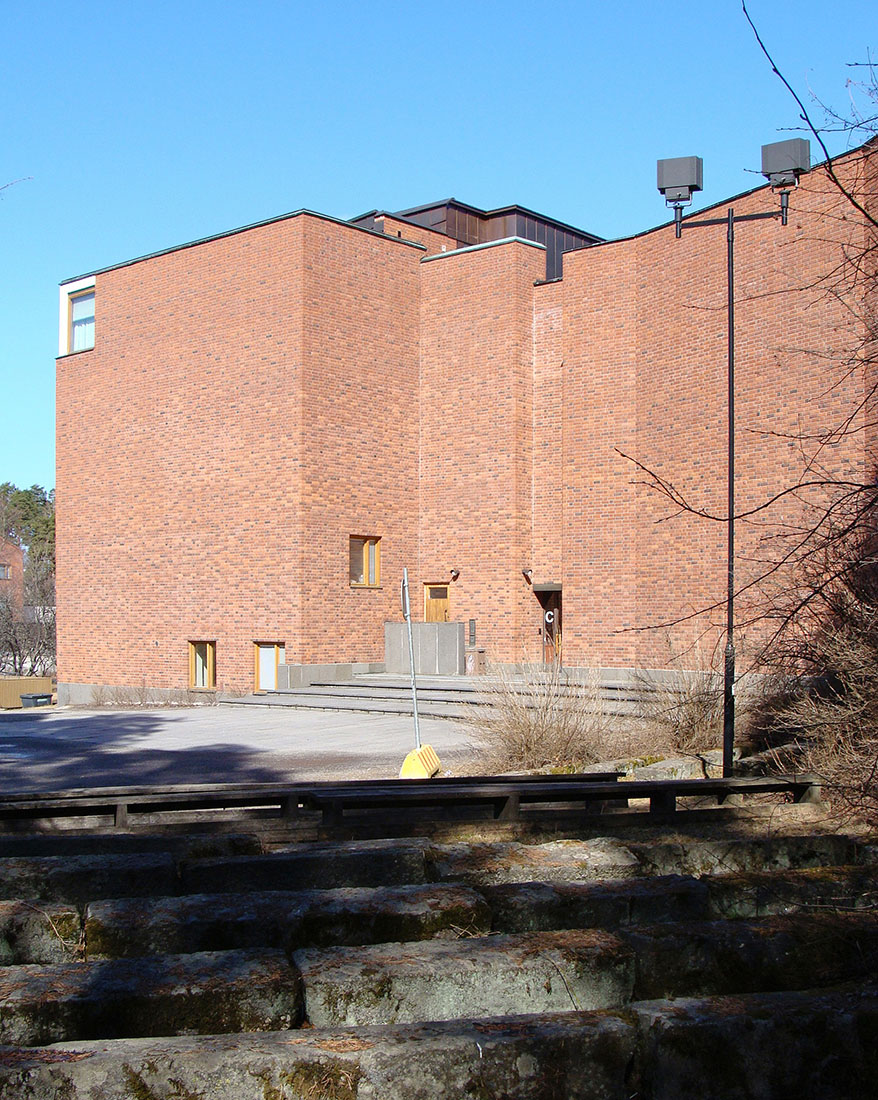 |
 |
 |
 |


Jyväskylä University Main Building
Seminaarinkatu 15, Jyväskylä
1952 - 1955
In 1950 Alvar Aalto took part in the general planning competition for the Jyväskylä Institute of Pedagogics. His proposal 'Urbs' was awarded the first prize at the end of May 1951, and the achitect was immediately commissioned to begin working on the plans of the various buildings. His proposal, reminiscent of some of his earlier projects, consists of several individual buildings, which are arranged in a U-shape, respecting the existing buildings of the complex. The central space, which is framed by the complex, is accessible only for pedestrians. Located in a ridge of pine trees close to the centre of the town, Alvar Aalto designed another piece of architecture in tense relation to the surrounding nature. Construction of the complex started in 1953, and within three years a major part of the complex was concluded, even if Alvar Aalto worked for several further years to design various buildings and additions. All buildings of the Jyväskylä Institute of Pedagogics expose Alvar Aalto's emphasis on materiality, combining white walls with wood, brick and glass. The whole complex contains buildings for various functions and was initially built for teacher training. In 1966 the college of education became a university.
The main building consists of a three-storey rectangular wing containing classrooms, offices and laboratories and a fan-shaped auditorium, which is the heartpiece of the complex. These two building parts are connected by a hall containing an impressive staircase of Venetian inspiration. The mentioned auditorium is also called festival hall, since it is used for festive and representational occasions. The unique free-form shape of the festival hall contrasts with the office wing, which is considered to be a matter-of-fact architecture. The main building of the University of Jyväskylä was slightly changed after the competiton, and was realized in the years 1954 - 1955. It was taken into use in 1958, although the official inauguration ceremony was hold only in 1959. The foyer to the festival hall is a rich compositon of various materials, such as marble, black granite, red brick, glass, wood and profiled ceramic tiles. The windowless walls of the festival hall are of brick, where the upper section is rendered and painted white. The stair hall is an impressive open space with a height of three and a half stories lit from above by skylights. This hall not only gives access to the upper stories of the classrooms and laboratories, but serves also as a throughfare passage linking the entrace square with the inner campus area. Over the years several alterations have been carried out on the main building, but overall it is well preserved. The mentioned changes became necessary as a consequence of changed uses. For example the physics and natural sciences laboratories on the ground floor were changed into workrooms in the 1960s.